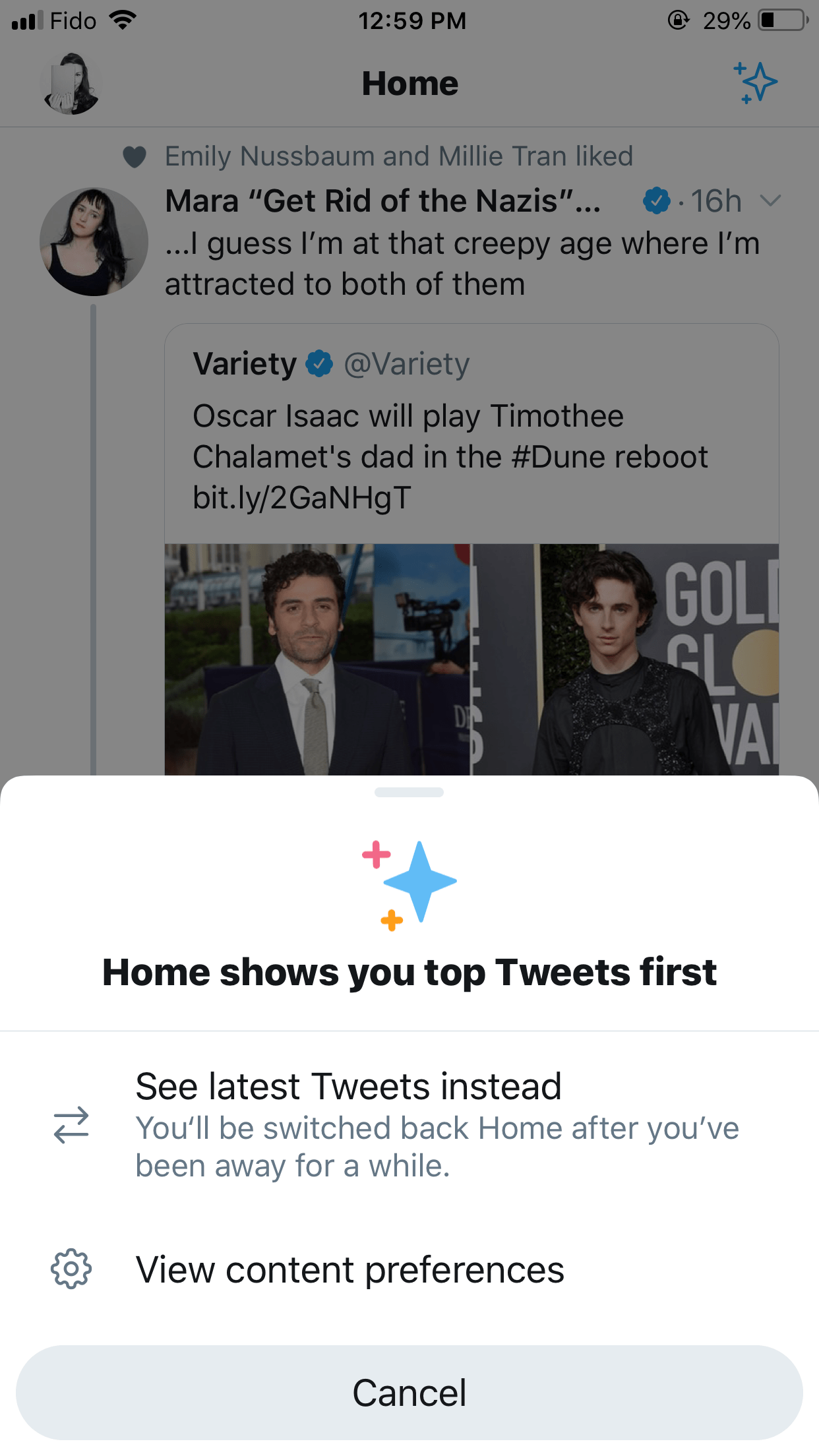
Knowing how the Twitter algorithm works is crucial information for any social media marketer.
More than 500 million tweets are sent everyday. That’s 5,787 tweets a second. How can your brand stand out from the crowd?
Much like Facebook and Instagram’s algorithm, Twitter’s algorithm works behind the scenes to rank and prioritize posts it thinks people want to see.
Yes, Twitter brought its chronological timeline back with the Latest Tweets feed. But the algorithm is still in play in the Top Tweets feed.
Read on to learn about the recent Twitter algorithm changes, and how your brand can optimize tweets for maximum organic reach.
Bonus: Download the free strategy guide that reveals how Hootsuite grew our Twitter following to over 8 million users and learn how you can put the tactics to work for your business.
How the Twitter algorithm works in 2019
A brief history of Twitter algorithm updates
2006: Twitter Feed 1.0
When Twitter launched in March 2006, its timeline structure was simple: Tweets were displayed in reverse chronological order. In other words, each user’s feed contained tweets from their followers, from the most recent tweets onward.
2014: Twitter recommendations
The timeline undergoes its first significant tweak. Instead of only showing content from followers, feeds start to include recommended tweets, topics, and accounts.
2015: While you were away
In early 2015, Twitter introduced a “While you were away” feature. As a forerunner to “In case you missed it,” this module was meant to provide users with a recap of notable tweets they might have missed.
Designed as an answer to FOMO (fear of missing out), this recap was curated based on “engagement and other factors.”
2016: Reordered timelines spark #RIPTwitter hashtag
Using the same algorithm applied to “While you were away” content, Twitter began to push the “best tweets” to the top of feeds.
The company’s first foray into algorithmically restructuring timelines was met with #RIPTwitter backlash. In retrospect, the outrage was probably a bit of an overreaction, especially since users just had to refresh their feeds to switch back to chronological.
Hello Twitter! Regarding #RIPTwitter: I want you all to know we’re always listening. We never planned to reorder timelines next week.
— jack (@jack) February 6, 2016
2017: Relevance model and ICYMI
Having not died—in fact, the algorithm drove more engagement from users—Twitter only slightly refined the algorithm in 2017.
In an effort to be more transparent, Twitter explained tweets were being scored on a relevance model, designed to predict which content users would find interesting. Twitter also replaced While you were away with In case you missed it.
2019: Top Tweets versus Latest Tweets
In September 2018, Twitter announced that users would be able to toggle between Top Tweets and Latest Tweets. What that means is people can now easily switch between an algorithm feed and a real-time feed.
New on iOS! Starting today, you can tap ✨ to switch between the latest and top Tweets in your timeline. Coming soon to Android. pic.twitter.com/6B9OQG391S
The primary sections on Twitter’s timeline now include:
- Top Tweets: An algorithm-powered feed organized by ranking signals. In addition to ranked content from followers, this feed will sometimes feature Who to follow suggests, and content from other accounts. Users can also provide feedback on content shown in this feed by selecting Show less often.
- Latest Tweets: A reverse chronological feed of tweets from followers.
- ICYMI: A short algorithm-powered module of top tweets. The more time a user spends in the app, the less likely they’ll see this.
- Happening Now: This section may occasionally appear at the top of user timelines, featuring events or topics of interest.
- Trends for you: An algorithm-driven section that highlights popular trends and hashtags for users. Under Content Preferences, users have the option to allow Twitter to personalize this content based on their location.

CEO of Kubient. A lifetime serial entrepreneur, mentor, advisor, and investor. Obsessed with the infinite realm of possibility in the digital transformation of the world, digital media, marketing and the blockchain.






